
Paul and I recently spent a few days in the Upper Peninsula of Michigan and Ontario, Canada. The U.P. is a place we frequently visited during our 20+ years living in central Michigan. Only four hours by car, it was the closest place we could go to rest and restore. After spending 6 months back in the U.S., we had booked most of June & July of this year to stay in Toronto. We could have driven there from Lansing, Michigan (our home base, where we stopped on the way from our recent time in Louisville, Kentucky) in about 5 hours. But Paul said, “Let’s go to St. Ignace!” So we drove the four hours up to the Mackinac Bridge (which connects Michigan’s lower peninsula to the upper), stayed overnight in St. Ignace, then drove another four hours up through Sault Ste Marie into Canada, staying overnight in Sudbury in Ontario a few hours north of Toronto. The third day we drove a final 4 hours down to Toronto following Lake Huron on the Canadian side.
We have loved this region for a long time. When Paul was a child, in the 1960's,his family often vacationed in northern Wisconsin, where Paul's dad had also vacationed when he was a child in the 1940's. One memorable trip had them driving to the Porcupine Mountains, a state wilderness park in the Upper Peninsula of Michigan. There, they hiked to see the Lake of the Clouds and visited several waterfalls, including Bond Falls, Paul's favorite. This photo of Paul & his dad would have been taken in the mid-1960's.

When Paul was in high school, he took a couple of trips to the Boundary Waters Canoe Area, paddling into lakes in Northern Minnesota and Ontario. He even had a close encounter with a bear who ate all of his (and his companions') food overnight! I think the story goes that it took them three days to hike out with nothing to eat but a pickle between them! A few years later, when I was in college, I went to the BWCA. This was true wilderness - nothing but trees, wildlife, and the call of loons. You had to portage your way from lake to lake and camp along the way.
When our children were small, in the early 1990's, Paul & I drove up to Mackinaw City and took the ferry to Mackinac Island, where we bicycled and sat on the porch of the Grand Hotel. We couldn't afford to stay there, but we soaked in the view of the Straits of Mackinac, where Lakes Huron and Michigan meet. My parents watched the children for this rare long weekend away.
When our children were in middle school, their Montessori class planned a trip to the U.P. from Dayton, Ohio. The children were involved at every stage of the planning - from studying Great Lakes trades routes, analyzing the wreck of the Edmund Fitzgerald, learning the Gordon Lightfoot song about the tragedy, creating T-Shirts in art class, and planning a budget. The kids called it "The Three-Toe Tour" because they were planning to dip a toe in Lakes Michigan, Superior, and Huron (which they did!) I was privileged to be one of 3 parent chaperones on the trip (including my good friend, Nancy Davis), along with the teacher, Andy Bergeron. There were many highlights from that trip, but my favorite was when the kids were touring the Soo Locks in Sault Ste. Marie and a woman said to us, "Who are those kids? They're so knowledgeable!" The kids hiked from the lower Taquamenon Falls to the upper falls, and we stayed in cabins near Paradise, Michigan. We went to Whitefish Point, home to a big lighthouse, a beautiful beach, a bird preserve, and a tragic history of wrecked ships. When they visited the shipwreck museum they were solemn and earnest, respecting the sailors who had perished. The most recent disaster there was memorialized by Gordon Lightfoot in his 1975 song, "The Wreck of the Edmund Fitzgerald."
In 2000, the first summer we moved our family to Michigan, we loaded a rented SUV with us, our two kids, and our dog, and took a ferry across Lake Michigan, then drove up to the Porcupine Mountains and Bond Falls, where Paul had vacationed as a child. Paul enjoyed recreating this adventure with his children and we were hooked on the majesty of the Great Lakes, the tall trees, and the clean air. We drove around to St. Ignace, crossed the Mackinac Bridge (the "Mighty Mac") and took a ferry to Mackinac Island. I think this was the first time we stayed in St. Ignace and had breakfast at a relatively new restaurant - Java Joe's cafe - a place we've visited many times since.
When Kate was in college, she participated in a summer music program with the Superior String Alliance near Marquette, Michigan. We enjoyed hearing her play. Paul took several motorcycle trips in the U.P. during this time, and attended some of her concerts. Her Dutch friend visited and we drove with her to the U.P. We enjoyed it so much we bought a cabin about two hours south of the Straits (2 hours north of our home) to relax on weekends.
Paul took a solo motorcycle trip around Lake Superior, staying overnight in St. Ignace, then heading into Canada at Sault Ste. Marie, winding his way around to Marathon & Thunder Bay in Ontario and crossing back into the U.S. in Minnesota. He especially enjoyed Duluth. He loved the trip so we traveled the same route by car in our Thunderbird a year later, after my Dad passed away. I remember feeling that the vast open spaces, the creamy blue water and the endless trees were just what I needed as I grieved my dad. Paul continued to take his motorcycle to the U.P. to cross over to Wisconsin to see his parents after he retired. Sometimes I met him in St. Ignace by car then returned to Lansing while he traveled on by bike.
In 2013 I escorted my Aunt Donna and her friend, Beth, to the U.P. and played host at our favorite spots. I really enjoyed showing them the Grand Hotel (where we had high tea), Java Joe's, Taquamenon Falls, and Whitefish Point. The waters of Huron, Michigan, and Superior were clear and sparkling blue. We explored a place I had not been before, a Oswald's Bear Ranch near Newberry where rescued bears were looked after.
After the kids left home, Paul and I continued to travel "up north" as the locals call it, often traveling in October for a fall color tour. Lake Michigan offers a lovely sunset, and Lake Huron offers splendid sunrises (something Paul has rarely seen but enjoys from my photos). We've developed a routine: stay overnight in St. Ignace, have dinner at Jose's Cantina (whitefish tacos) and breakfast at Java Joe's before heading back downstate. These photos are from 2013, 2021, 2022.
The culture of the region is rich with a history of inter-cultural encounters. The indigenous population are Anishanaabe, who left the eastern coast of what is now Canada to travel West. Other groups moved on, but the Anishanaabe stayed in the Great Lakes region, cultivating wild rice and living on the land. Today there are communities of Anishanaabe, the largest of whom are Ojibwe & Chippewa. I visited an Ojibwe museum in St. Ignace - it is small but nicely done. The museum is located in a Mission Church founded by Pere Marquette, a French priest and explorer from the late 1600's. A good friend of mine, Gloria, recommended a book that explores the modern Ojibwe/Chippewa culture of the region - The Firekeeper's Daughter by Angeline Boulley. I couldn't put it down, and quickly read both that book and her second in the series, Warrior Girl Unearthed. I highly recommend both books.
When you visit the U.P., you often see T-shirts that say "Up North." Paul thought it was amusing to see T-shirts in Canada that say "True North."

This time, after we stayed in St. Ignace, we continued on "True North" into Canada. Although we have circled most of Lake Michigan, all of Lake Superior, and the U.S. side of Lake Huron, we had never followed Lake Huron on the Canadian side. Because there are so many inlets and small lakes, it turns out you don't see much of the big lake on that side. In addition to the indigenous culture, you see remnants of the French Voyageurs, who trapped animals for fur and traded all along the Great Lakes waters, and the English, who founded the government system and big cities. All three cultures meld in modern Ontario. The culture in both the U.S. and Canada sides is pretty much the same, except for the poutine (which I've tried to like but just don't!) As we hit our destination, Toronto, where we will live during most of June & July, we felt restored yet, like any good voyageur, ready to lay our heads down in one spot for a while.
I'm told Gordon Lightfoot is an icon in Ontario. He was born in Orillia, Ontario, and lived most of his life in Toronto. He clearly loved the Great Lakes. When he heard about the wreck of the Edmund Fitzgerald in 1975, it is said he wrote the song so that the sailors would not be forgotten. When I hear it, it feels like a funeral dirge and a sea story. When he passed away in 2023, the Sailor's Memorial Chapel in Detroit rang the bells 30 times - one for each sailor on the Edmund Fitzgerald, and one for Gordon Lightfoot. You can hear him sing the song here.


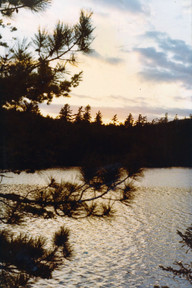





















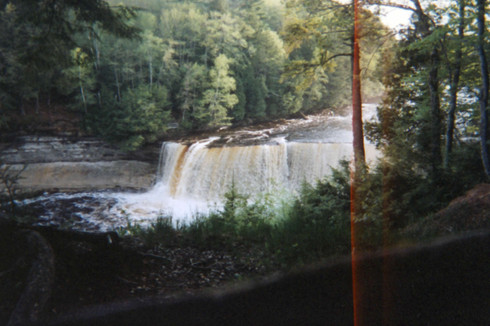

















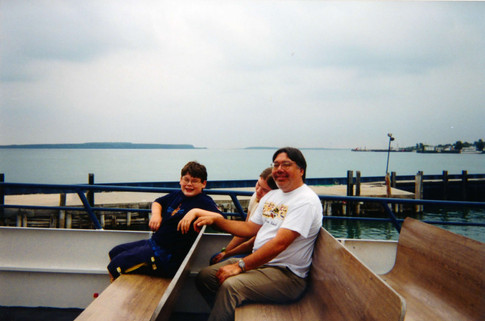







































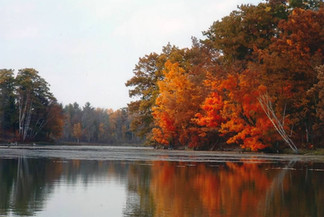



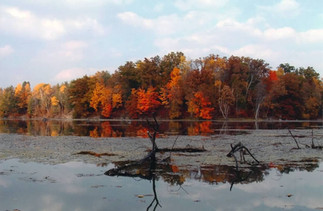












































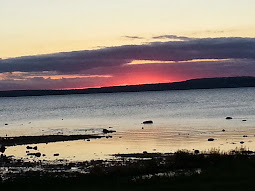


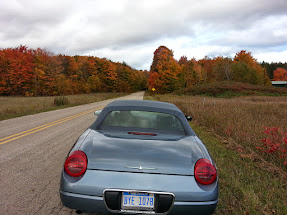



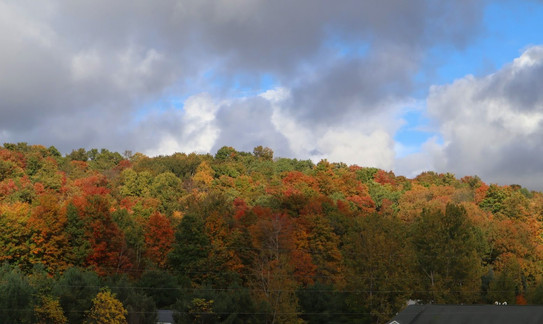






























































































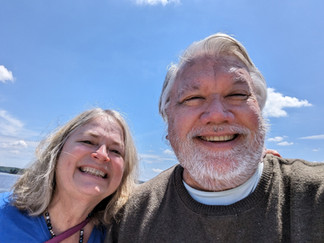

















Great memories! Love young Paul with Dad. Mom had such an amazing time on the trip with you. Thank you for bringing her such joy. How awesome was that Montessori concept! Could feel the idea of open skies helping with grieving.
Continue to enjoy Canada! ❤